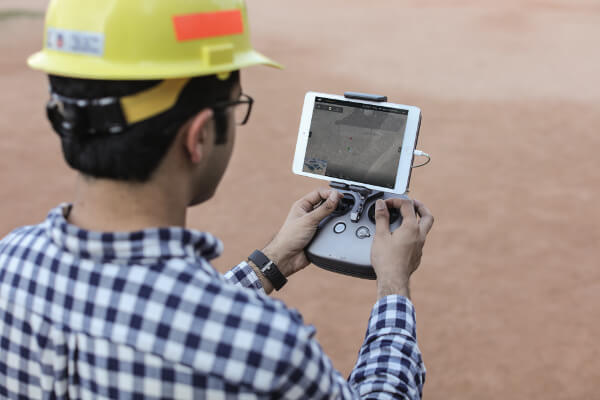The World is Shrinking; Drones Technology Reaches Ever Further
Ever since drones first took to our skies, companies have looked at ways they can be utilised to deliver goods to customers, quicker and easier. Drone technology could prove invaluable for ship to shore delivery or from oil rigs to the mainlands they service. They could also provide cost-saving logistical solutions in and around major warehouse operations.
Drone payloads depend on model, but there are advanced versions that can carry up to 220kg. These heavy lift drones can be used as an alternative to light aircraft – These drones have been successfully trialled for the transportation of medical supplies.
As has technology advanced, so has the humble drone. The continual development of AI has catapulted the usability of the drone into many industries. Many drones now work off pre-programmable flight plans – making them easier than ever to apply to a multitude of tasks.
From mine shafts, to moors. Pylons to the Pyrenees drones are working globally. But are there still places commercial drones can’t go?
In this article you will learn;
- Drones & coronavirus
- Drones & Unicef
- Hazardous area inspection
- Eco Drones
- Limitations
If you would like to speak to one of our experts about investing in drone technology please contact us here.

COVID-19 and drone deliveries
Let’s start by looking at the recent Coronavirus pandemic and how drone technology proved to be invaluable in the battle to limit infection and to deliver practical solutions.
Take for example the safe delivery of Personal Protection Equipment and testing materials during the COVID-19 pandemic. Critical supplies needed to tackle the virus have been swiftly transported to remote locations around the globe, thanks to drone technology.
This includes, for example, using drones to deliver COVID-19 supplies and other medical materials to the Isle of Mull. As a result of the UK lockdown, getting supplies to the Mull and Iona Community Hospital in Craignure was a logistical nightmare. However, countless islanders were helped when health authorities in Argyll and Bute on the mainland used drones to transport deliveries 12 miles across the sea.
Reports suggest the success of this trial will result in similar healthcare-related projects to deliver critical supplies using drones.
This is not the only way in which this advanced technology proved invaluable during the COVID-19 pandemic.
Nor was this the first time that drones proved their ability to reach places humans couldn’t, to help out in the lockdown. In the epicentre of the virus – Wuhan in China – hospitals were kept supplied with crucial items using drones for speed and infection control.
The USA and Australia used them to deliver groceries too, keeping people supplied through a difficult lockdown.
Drones going where humans fear to tread
What other ways are drones making tracks?
The development of collision tolerant drones has made it practical to deploy them in operational situations when it is impossible to predict a clear, incident-free pathway. Complex and constantly in motion locations – internally and externally – can be accessed by using drones for data collection.
This has revolutionised the construction and engineering industries. The need to set up and deliver visual inspections in hazardous areas on bridges, tunnels and large structures has been consigned to history. This often time-consuming, demanding and safety-sensitive task has been replaced by an ability to gather detailed readings and visual references from high or confined spaces, using commercial drones.
Similarly, drones for Emergency Services and military applications can also take supplies or gather crucial information in places that would be impossible or dangerous for humans to venture. During major disasters, this has saved countless lives across the planet.
For example, humanitarian aid charity UNICEF has used long-range drones to deliver important medical supplies to remote communities in Malawi in partnership with the government there. This negates the need for risky and expensive plane drops or vehicles travelling on arduous and badly made roads.

More remote applications for drones
Not all commercial drones have such ‘lofty’ aims and applications when used to reach remote or complex places. Some of the ways this technology has widened our geographic access and understanding extend downwards!
There are projects involving the use of sophisticated drone technology to perform diverse tasks in large mining operations. This is the perfect example of when collision tolerant models are invaluable.
Going underground after extensive excavation can involve considerable danger. Using drones to survey potentially unstable areas of mines can inform future operational planning and risk management.
Clearly, nimble drones for inspection can penetrate deeper into smaller spaces with minefields, travelling to gather information from underground locations that are impractical for humans or even larger pieces of mine technology.
https://www.flyability.com/casestudies/indoor-drone-in-underground-mining-accessing-the-inaccessible
Opening up more of the Earth’s eco-system
Another way the world has become smaller thanks to 360 drone solutions is in the field of conservation.
There are thousands of animal species threatened with extinction. Mapping their numbers and movements, and getting up close enough to gather key data, flies in the face of many protection issues. Drones can be a vital solution, especially ones equipped with the ability to gather geospatial imagery, enabling them to not only photograph global ecosystems but also track specific species.
Drone technology is currently being explored by the School of Natural Sciences at Liverpool John Moores University. They have worked on an autonomous drone system that can follow animals in their undisturbed natural environment, relaying important data back to researchers.
There’s another illustration of drones used in inaccessible places that could surprise you on many levels.
The Ocean Alliance are currently using specially adapted DJI drones to collect whale mucus.
Gathering business intelligence from remote locations
We have previously published insights on the use of drones for surveillance and mapping activities. One of the most widespread applications of these is in the oil, gas and marine sectors.
Having the ability to safely and remotely collect detailed data from in and around storage tanks, refineries, rigs and ships at sea have been a game changer for these sectors. The offshore use of drones has become ever more ‘far-reaching’ in terms of physical reach and task parameters.
Companies can be far more intuitive about maintenance planning and production optimisation using the ‘drilled down’ business intelligence gathered by long-range drones. This has also served to boost safety at both onshore and offshore facilities and has reduced costly downtime.
All with that reassurance that increasingly nimble but far-reaching drones can travel to tough and demanding places, even in harsh environmental situations.
As drone technology moves forward, the usefulness of their access to remote places grows exponentially. For example, rather than simply using drones for surveying and gathering imagery, it is becoming possible to use them to take detailed readings of gas emissions and to use thermographic imagining to uncover heat-related defects and levels.

Places even drones can’t go
This ever-advancing technology is clearly making it possible to reach places in the world – or specific UK locations – that were otherwise out of bounds for multiple reasons.
However, are there places commercial drones can’t go?
The answer includes whole countries, whose governments have so far outlawed drone operations in a blanket fashion.
This list of places you can deploy commercial drones is growing though, as legislation to control usage springs up across the globe. This trend is likely to continue, as the value of their application is more widely understood and legislators regulate operators.
At the time of going to press, among the countries which have yet to welcome drones for mapping, surveillance or delivery tasks include Algeria, Barbados, Brunei, Cuba, Iran, Iraq, Morocco, Senegal and Syria.
Leading drone manufacturers are joining the campaigns to get these blanket bans lifted. Much of which involves showing their humanitarian and conservation uses, allaying fears that their only purpose is to carry out surveillance.
An example of a manufacturer getting involved in the work to put them in a positive light is Parrot. That drone manufacturer joined forces with the Technical Centre for Agriculture and Rural Cooperation (CTA) to demonstrate the applications of Unmanned Aerial Systems (UAS) in Sub-Saharan Africa. The goal was to show how using UAS drones can support the economy in remote locations.
It’s unlikely any country will be able to maintain drone bans in the future. Particularly as their use for environmental, economic and medical support becomes more widely known. Having the ability to access remote locations quickly and cost-effectively will make commercial drones essential to a country’s health.
Beyond these geographical limits to drones, there are other limitations emplaced by the CAA. You can learn more about drone regulations HERE.
How far can drones go?
The quality of the radio link is the key limitation, dictating how far the autonomous unit can travel from the transmitter and navigator. Ways to facilitate flights that extend longer, higher and across greater distances are constantly been developed, which may mean adopting military tech insights to commercial production of drones.
In fact, it could be safely argued that as the design, manufacture and programming of commercial drones advances, the sky is the limit in terms of how much of the world they can reach. As well as how many vital tasks they can carry out as they evolve.
If you would like to speak to one of our experts about investing in drone technology please contact us here.

